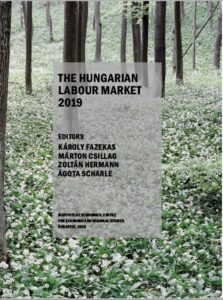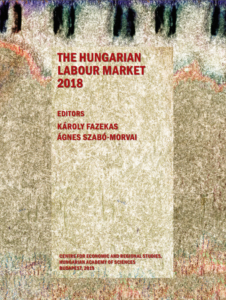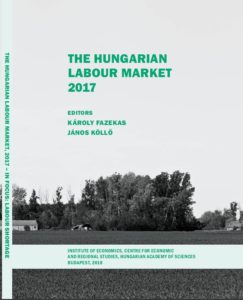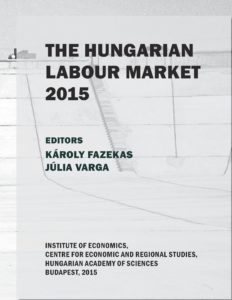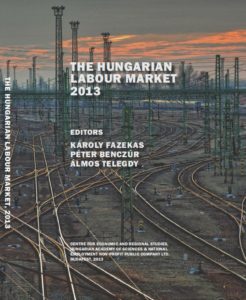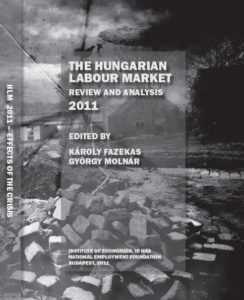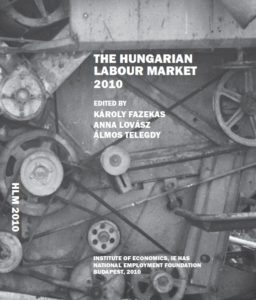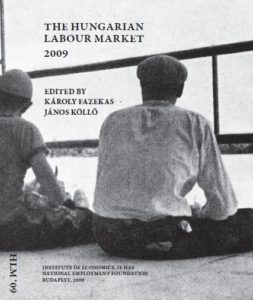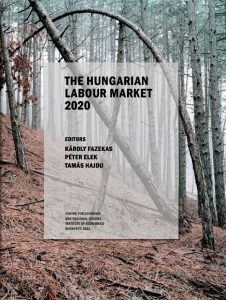
THE HUNGARIAN LABOUR MARKET 2020 Editors: Károly Fazekas, Péter Elek, Tamás Hajdu
The Hungarian Labour Market Yearbook series was launched in 2000 by the Institute of Economics, in order to report on the processes and latest trends of the Hungarian labour market and employment policy, and provide an in-depth analysis of a particular subject each year.
In compiling the content of each yearbook, the intention of the editorial board is to deliver relevant and useful information on the labour market trends and the legislative and institutional background of employment policy in Hungary, and on the latest findings of Hungarian and international research studies.
The book can be downloaded in one file or by chapters:
Tartalom
Contents
Foreword
The Hungarian labour market in 2019–2020 (Tamás Bakó & Judit Lakatos)
Labour market policies
1 Labour market policy tools (June 2019 – May 2020) (Miklós Hajdu, Ágnes Makó, Fruzsina Nábelek & Zsanna Nyírő)
2 Labour market measures in Europe in reponse to the coronavirus pandemic (Ágnes Makó & Fruzsina Nábelek)
3 Corporate perceptions and expectations of the impacts of the Covid-19 pandemic and the crisis management steps taken (Dániel Bacsák & Ágoston Horváth)
In Focus: Labour market and health
Introduction (Péter Elek & Tamás Hajdu)
1 Health and labour force status in Hungary and Europe (Anikó Bíró, Réka Branyiczki & Zsófia Kollányi)
2 Income, labor market and regional inequalities
2.1 Inequality of mortality and morbidity by income (Anikó Bíró, Péter Elek, Tamás Hajdu, Gábor Kertesi & Dániel Prinz)
K2.1 Disparities in the occurrence and care of myocardial infarction in the light of labour market correlations (Annamária Uzzoli)
2.2 The correlations of labour market status, the prevalence of certain chronic diseases and healthcare expenditure (Petra Fadgyas-Freyler & Tibor Fadgyas)
2.3 The distribution of informal payments, of the use of private health care and of unmet healthcare needs along the axis of socioeconomic status (Petra Baji)
3 Employee health
3.1 Labor income, health status, and healthcare spending (Anikó Bíró & Dániel Prinz)
3.2 Firm characteristics and health (Márta Bisztray, Anikó Bíró & Dániel Prinz)
3.3 Accidents at work (János Köllő & Zsuzsanna Sinka-Grósz)
K3.1 Accident risk and wages – theoretical considerations (János Köllő)
K3.2 The effect of the smoking ban on the newborns of women working in the hospitality sector (Tamás Hajdu & Gábor Hajdu)
3.4 The incentive effects of sickness absence compensation (Márton Csillag, Kinga Marczell & Lili Márk)
K3.3 The effect of the development of outpatient health care services on workers – the example of a social infrastructure development project (Márton Csillag & Péter Elek)
K3.4 Health of Central and Eastern European migrants (Anikó Bíró)
4 The healthcare system as employer
4.1 The health of healthcare workers (Júlia Varga)
4.2 The out-migration of physicians between 2009–2017 (Júlia Varga)
5 Unemployment and health
5.1 The impact of the economic crisis and job loss on health(Péter Elek, Judit Krekó & Balázs Munkácsy)
K5.1 Health care use following public works participation (Márton Csillag & Balázs Reizer)
5.2 The long run health consequences of the economic transition (Anikó Bíró & Réka Branyiczki)
6 Ageing and the labour market
6.1 Old-age retirement and health (Anikó Bíró & Péter Elek)
6.2 The labour market context of the increasing demand for palliative care (Károly Fazekas & Melinda Tir)
7 Reduced capacity to work, disability, rehabilitation
7.1 Employment of the disabled population and demand-side policy measures (Judit Krekó & Ágota Scharle)
K7.1 The disability employment quota and the rehabilitation contribution (Judit Krekó & Ágota Scharle)
7.2 Changes in disability benefits and their impacts (Judit Krekó & Ágota Scharle)
K7.2 Assessing work capacity and measuring the size of the disabled population (Boldmaa Bat-Erdene, Judit Krekó & Ágota Scharle)
8 Health shocks in childhood and youth and educational attainment
8.1 The effect of hospitalisation on the school performance of children (Zoltán Hermann & Dániel Horn)
K8.1 An overview of the literature on the subsequent impacts of childhood shocks (Ágnes Szabó-Morvai)
8.2 Teenage motherhood and the labour market (Anna Adamecz-Völgyi)
9 The first wave of the coronavirus pandemic
9.1 Policy responses to the coronavirus pandemic in Hungary during the first half of 2020 (Balázs Váradi)
9.2 Employment during the first wave of Covid-19 (János Köllő)
Appendix. Admin3 – Panel of linked administrative data (Anna Sebők)
Statistical data
Index of tables and figures

